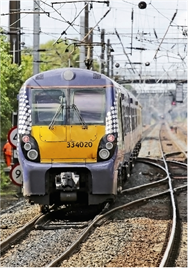 Download the graphs for this feature.
Download the graphs for this feature.
The prospect for Scotland is very different, so it is worth examining how substantive improvements have been enshrined in the new ScotRail and Sleeper franchises.
The franchising process has been managed by Transport Scotland Commercial Director Bill Reeve. “It may sound as though one is stating the obvious, but if you are about to let the Scottish Government’s largest contract at £3 billion-plus over ten years, it is important to have absolute clarity about the objectives and how they can be brought to fruition,” he says.
The Scottish Government’s stated purpose is to promote sustainable economic growth for people throughout Scotland, a purpose for which rail is well placed to contribute.
With the ScotRail franchise due for renewal in 2015, Reeve was put in charge of a small commercial unit. An early decision was to take the Caledonian Sleeper out of the ScotRail franchise, and allow a new franchisee to focus solely on customer needs, marketing and operation of that distinctive service.
Two immediate tasks were set. The first was to create a team dedicated to rail franchise procurement, which most would see as the biggest single determinant of the railway’s future.
Since Transport Scotland is largely a procurement organisation - buying bridges, ferries, roads and even airfields - it has developed substantial expertise in the process. But a sound understanding of the principles of procurement law needs to be matched by, as Reeve neatly puts it: “a team that knows its brake sticks from its shunting poles”.
Second was the need to gain a clear understanding of what the public and stakeholders wanted the railway in Scotland to be. A Rail 2014 consultation was conducted over three months in 2011-12, and elicited more than 1,400 responses. As well as events at stations from Stranraer to Inverness, more than 30 meetings were held with stakeholders such as the CBI, the Scottish Council for Development and Industry, Chambers of Commerce, passenger groups, Regional Transport Partnership areas and accessibility groups.
Reeve recalls: “We even asked basic questions such as: did they want the Sleeper to even continue? It was rather reassuring that most deemed it deeply offensive that we had even asked the question.
“Three priorities came out of the consultation: speed and comfort; integrated transport services and ticketing; and engagement with communities. The exercise gave us confidence that we had the strong underwriting of the people of Scotland and from the body politic about their expectations for the railway and steady improvements in quality.”
With a balanced team in place and having gained an insight into the public’s aspirations for rail, Reeve’s team worked through a series of iterations with Transport Scotland’s Rail Policy team to “devise a procurement policy informed by what was practical and possible to achieve”.
He adds: “Our approach has been to encourage a challenging response where we wanted things to change, but not so challenging that it is undeliverable and unreasonable. Working out that balance requires a measure of expertise.”
Naturally that balance needed to take account of the competitive environment in Scotland, which is very different from England and Wales. The good road network and comparatively low levels of congestion in Scotland give people a real modal choice, so the railways have to be attractive to win passengers. The challenge is made greater by the Scottish Government’s fares policy - regulated fares on peak services can increase by no more than RPI and off-peak by RPI-1%.
Although the Brown Review of the rail franchising programme and the Laidlaw Inquiry in the wake of the West Coast franchise debacle had yet to appear, Reeve had anticipated their conclusions by ensuring that Transport Scotland was a competent, expertly informed client. The commercial unit team could draw on outside technical support from Atkins, financial advice from Ernst & Young, and legal input from DWF Biggart Baillie.
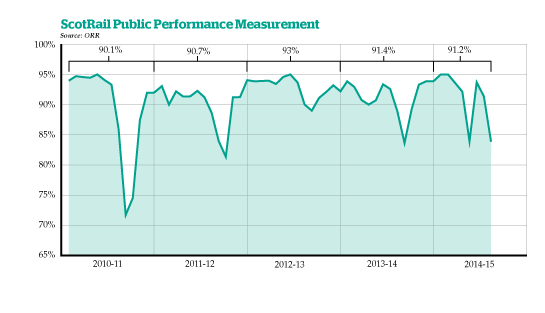 The next requirement was clarity. Reeve believes that some of the eternal verities of railway economics have been lost in recent decades - one being that the very high fixed-cost nature of railways can be amortised only by maximising returns, yet some rail industry arrangements fail to incentivise growth.
The next requirement was clarity. Reeve believes that some of the eternal verities of railway economics have been lost in recent decades - one being that the very high fixed-cost nature of railways can be amortised only by maximising returns, yet some rail industry arrangements fail to incentivise growth.
Maximising returns for the railway through growing passenger numbers (as distinct from fare levels) helps affordability, by reducing the burden on both taxes and passenger as well as reducing emissions from transport. Consequently, in the evaluation criteria set out for the franchises, with a clear indication of how points would be awarded, creative ways of increasing off-peak use was a major element.
The criteria also worked to maximise the possible broader returns for the people of Scotland. As Reeve says: “Transport Scotland spends a lot of money, but the franchisee also spends a lot of it too, so we were very keen that as much as possible should bring benefit to the economy of Scotland.
“There are limitations about what one can do about that in European law, but we can do things such as encourage opportunities for small- and medium-sized enterprises in supplying the franchise. So, for example, we have encouraged the promotion of Scottish produce as part of the enhanced catering offer on the Caledonian Sleeper.”
A persistent criticism of franchises has been the failure to align incentives to produce the desired outcomes.
“We wanted to see an alignment of incentives between Network Rail and the franchise operator so that they deliver our strategic objectives. We don’t have it now.
“Network Rail has no incentive to accelerate the times of trains - quite the opposite, given additional track maintenance costs and the adverse impact it might have on hitting performance targets. At present, neither the regulatory framework nor financial payment regimes provide an effective motivation for attracting additional passenger or freight customers to the railway network.
“We know that faster trains attract additional passengers and improve use of assets such as trains and paths, but it isn’t something that Network Rail is incentivised to deliver.
“In the franchise, we encouraged bidders to enter into an alliance with Network Rail. We awarded points not for an alliance per se, but where the bidder offered an improvement in output or a reduction in cost through that alliance. Abellio had the most ambitious plans for such an alliance. I think this will be a hugely important part of the strategic future for the railway in Scotland. Watch this space!”
A paradoxical challenge for franchise bidders was ScotRail’s high current PPM performance standard. The Invitation To Tender criteria assumed competence at maintaining this standard and gave no additional quality points for doing so, instead raising the bar by introducing scores for new qualitative improvements.
Says Reeve: “We would like punctuality to be a little better, but it is not a priority for improvement because it is already pretty good. We chose to award a high percentage to quality rather than finance - 50/50 for the Sleeper and 35/65 for ScotRail - focusing on areas where we wanted strategic changes such as new electric trains and creation of a proper inter-city network.
Smart Ticketing
“From Edinburgh and Glasgow, faster services with higher standards of comfort will serve the more northerly cities of Aberdeen, Dundee, Inverness, Perth and Stirling. A Class 170 to Inverness is OK, but it’s pretty draughty when the doors open at Aviemore in December.
“We allocated 25% of the 35% to SMART integrated ticketing. Abellio produced a very high-quality response to this, thanks to its experience of inter-operator SMART ticketing in the Netherlands. Abellio would realise and add to the potential of what has already been put in place, with a target of 60% SMART tickets within four years.
“Transport Scotland has already required and funded the fitting of ITSO ticket readers on all buses in Scotland, which has paid for itself many times over in producing auditable figures of claims for concessionary travel. There is also the potential to extend integrated ticketing to ferry services. But the Abellio bid also covered more basic improvements such as integrated timetables.”
Scotland offers some of the most dramatically scenic rail journeys in Britain. They are not only vital lifelines for remote communities where many inhabitants are on below-average incomes, they also have tremendous potential for tourism when imaginatively managed and promoted. Whether it is bird-watching from the RSPB visitor centre in the station building at Forsinard on the Far North line, Jacobite steam specials on the West Highland line to Mallaig, or using the train to access bike routes, there is great scope for developing eco-tourism in areas that need such appropriate development.
“We specified a minimum of the Kyle and West Highland lines for the introduction of ‘scenic trains’, and encouraged simple improvements such as seats aligned with windows,” says Reeve.
Abellio’s bid promises refurbished PRM-compliant Class 158s, catering featuring Scottish produce and a ‘tourist ambassador’ on board trains. The operator has also added the Far North, Stranraer and Borders lines to the ‘Great Scenic Railways of Scotland’, aimed at attracting more people to the regions and making the train journey part of the visitor experience. This isn’t new thinking, but it has perhaps been lost in the cut and thrust of franchising. It’s clearly not the most important part of the franchise, but the bid teams responded enthusiastically to this part of the specification.
“As far as I know, this is the first time that a franchise contract has included a commitment to operating additional steam trains on an occasional basis over various routes,” enthuses Reeve. That’s right - a franchise seeking steam operation!
“Besides making sound economic sense, these steam and scenic trains build goodwill. It was notable that a radio commentator in Scotland, talking about the January 2015 fare increases, cited windows aligning with seats as one of the positive developments of the new franchise.
“We were very consistent about all these strategic priorities. We began giving market briefings two years ago, flagging our priorities in the pre-qualification process, so by the time we published the Invitation To Tender for ScotRail in January 2014 there were no surprises. Bidders and their suppliers knew what was important to us. They had a lot of time to think about solutions to our problems and ways to meet our aspirations. We got better quality bids as a result.”
Before the bid results were announced, the Laidlaw Inquiry and the Brown Review of the rail franchising programme published their findings.
One recommendation of the Brown Review suggested that “bids should also be explicitly scored on their proposals for improving service quality for passengers and their approach to management”.
The structure and approach adopted by Transport Scotland was further endorsed by Laidlaw’s conclusion that the West Coast franchise competition had failed “because of an accumulation of significant errors related to inadequate planning and preparation, complex organisational structure, and a weak governance framework”.
And Brown further commented: “The temporary suspension of franchising has also had a very negative impact on the industry’s supply chain, with many companies having to reassure their investors in its aftermath.”
This is particularly the case with rolling stock procurement. As Reeve observes: “Very few passenger trains have been built except by an act of government will. New trains are bought because of growing demand met by a franchise specification or a variation to an existing one; regulatory requirements such as Mk 1 replacement or accessibility; and because of new projects such as Crossrail, Thameslink or the Edinburgh Glasgow Improvement Programme EGIP.
New Rolling Stock
“The short length of franchises compared with asset life means it is highly unusual for a TOC to invest in new trains unless it is underwritten by government. Government is necessarily involved, so the question becomes not whether but how should government be involved in rolling stock procurements?
“We knew through consultation what we wanted, and how suppliers could meet those wishes. We included a mandatory output specification plus a detailed, but advisory, technical spec for the new electric rolling stock.
“We had good feedback from suppliers and bidders that it had concentrated minds on what was wanted. We signalled that we were prepared to underwrite the rolling stock over a longer period, and we have got better value deals as a consequence. We have also removed the risk of inflation, when a train gets re-priced at inflationary rates at the end of a franchise contract.
“Historically there has been a reluctance by government to underwrite rolling stock beyond the length of a franchise. Most trains in Scotland have spent their life in the country, and those we are ordering are likely to be here beyond the life of the new franchise contract. We have to assure ourselves that they are trains we wish to continue using well into the future.”
New rolling stock was the headline component of the 15-year Caledonian Sleeper franchise announced in June 2014. New trains with four types of accommodation and Club Car will be built to enter service in 2018, with interiors by leading Scottish designer Ian Smith Design. Serco is partnering with leading Scottish hotel and catering suppliers to devise the hospitality offering and Club Car fare. And during the first two years, 15 apprentices will be trained, followed by two a year, Staff pay and conditions are also protected.
Abellio was announced as the ScotRail winner in October 2014. What has the outcome been?
Reeve’s team has calculated that the franchising process will have saved Transport Scotland more than £1bn over ten years, when compared with projections for the network rolling forward current costs. This colossal saving is a robust riposte to the too-common notion that a high-quality railway must cost more.
Says Reeve: “Bidders accepted that quality initiatives (for example, on the inter-city routes) will drive additional patronage, and that SMART ticketing will persuade more to use public transport. Additional revenue will be achieved without hiking prices. So we have achieved a substantial improvement in quality, coupled with a significant reduction in cost to the taxpayer.”
In terms of managing the franchise and the developing alliance between Network Rail and ScotRail, Reeve sees mutual understanding as central to the process.
“We now have people in the industry who have been on one ‘side’ or the other for 15 years or more. They are very able and motivated, but they can remain largely ignorant of the other half of the rail industry. That produces sub-optimal decisions and outcomes, from the perspective of the industry at large and its effect on the whole economy. It is vital that TOCs understand the nature of Network Rail’s cost structure, and people in Network Rail are able to appreciate the nature of TOCs’ revenue imperatives.”
Looking to the future for ScotRail, growing demand for rail travel shows no sign of abating, while car usage suggests there is validity in claims that the country is experiencing ‘peak car’.
The prospect of accelerating passenger growth through a network of inter-city services (operated by 27 refurbished HST sets released by Great Western Main Line electrification), coupled with the Edinburgh-Glasgow Improvement Programme, is promising. Reeve also believes that urban air quality issues will become more prominent, as respiratory illnesses and an estimated 2,000 deaths a year (Health Protection Scotland) drive measures to reduce vehicle pollutants.
“There is certain to be continued budget pressure, and rightly so,” he says.
“Railways must demonstrate that they are as good at achieving the overall objectives of the Scottish Government as any other means. But investment depends very much on one’s perspective.
“While working at the Strategic Rail Authority as director of project sponsorship, the Borders Railway was well down the pecking order, so I had to cull it. Viewed from within Scotland, its reinstatement is the right answer for the Borders, so it was a pleasure to oversee the team that pushed the Waverley Railway (Scotland) Act 2006 through the Scottish Parliament and then pilot the project. The answer to questions is inevitably determined or influenced by where they are asked and the railway is a good illustration of how devolution works.”
So if one was to summarise Scotland’s answer to the question ‘what is franchising for?’, one could say that it is to give railways a dynamic role in the economy by incentivising growth through quality.
Reeve applauds the priorities set out by Network Rail’s chief executive Mark Carne - safety, reliability, capacity, cost - but would add a fifth… customers.
“How the first four are managed has a big effect on how many customers you get. The railway has done a good job since devolution, but our vision for the future of rail services is going to be a fantastic thing to watch developing over the next few years. I am confident we shall go from a rail network that the people of Scotland already like to one they recognise that they can and should be proud of.”
Expert comment: Lord Bill Bradshaw
The letting by the Scottish Government of the new Caledonian Sleeper and ScotRail franchises sets out a fresh approach where ambition is a crucial part of the process, both on the part of those administering the competition and the franchisees.
At the beginning of the article, Bill Reeve describes the sclerotic state of the process in England and Wales, which has done little or nothing to realise the potential of our railways. Although this attitude may be improving, it is plain that franchising is best handled locally, as close to the users as possible.
The realising of the tourist potential of the railway is apparent, and the confidence of government and franchisees shows through.
The realisation that rolling stock is a long-term issue, and the willingness of the Scottish Government to offer a guarantee, contrasts with the way that Westminster has for a long time approached the issue. This is a major fault in the system, leading to chronic overcrowding and a shortage of rolling stock where it is quite impossible to improve services.
It is interesting to read of quality improvements that have been included in the new ScotRail franchise, and will hopefully be included in future franchise competitions. The incentivising of growth is very welcome, and the projections about future finances are refreshing and encouraging.

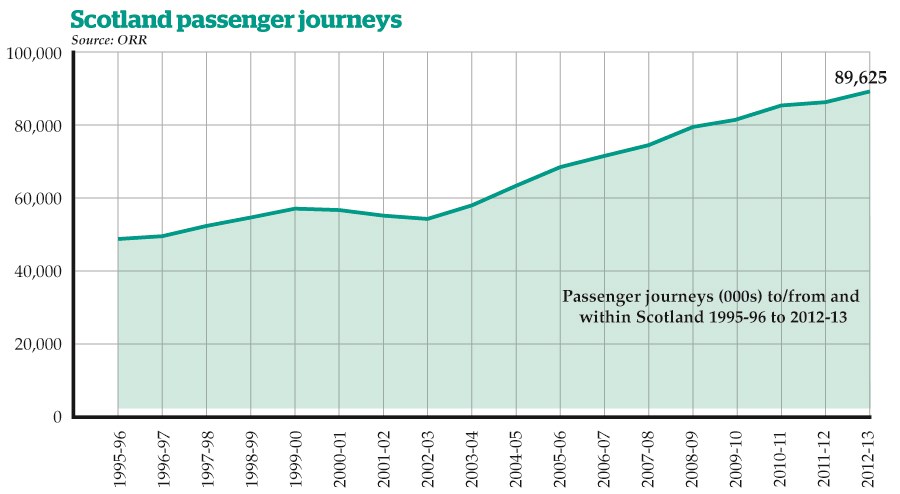
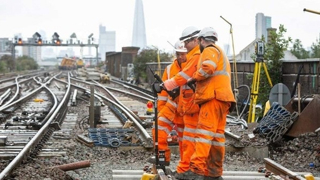
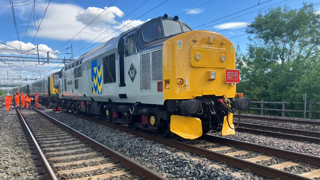

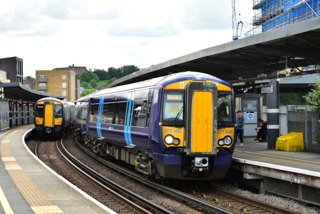
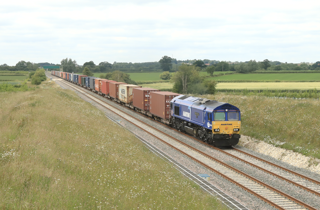










Login to comment
Comments
No comments have been made yet.